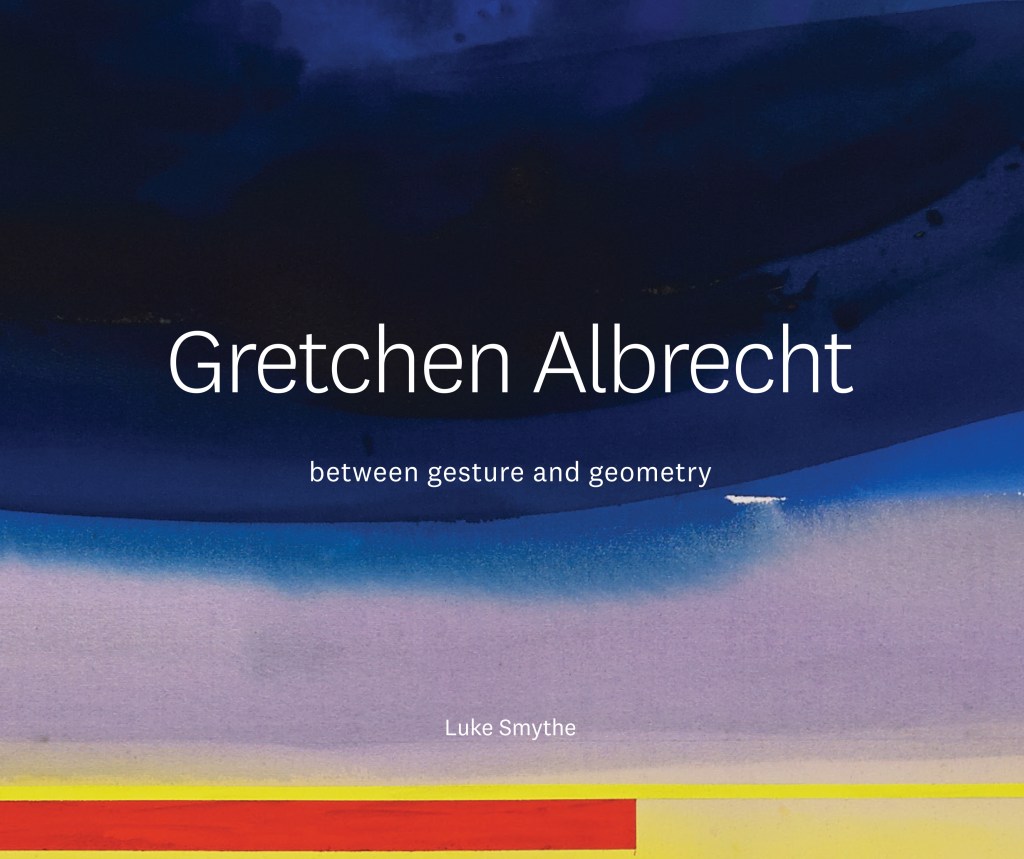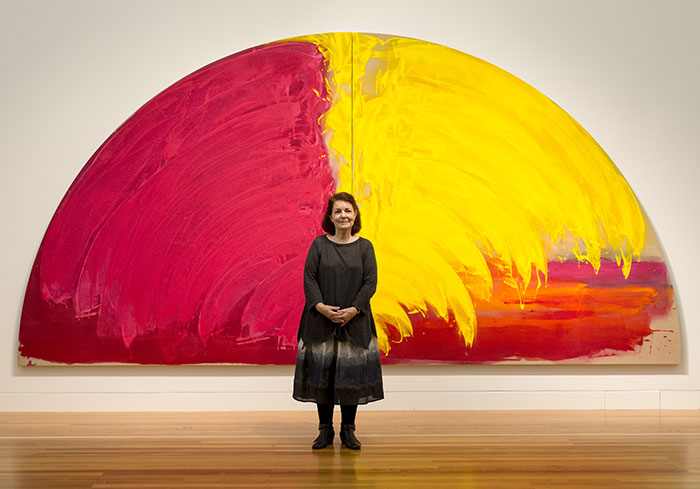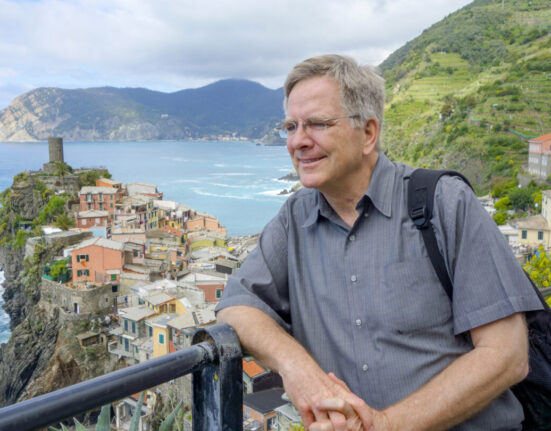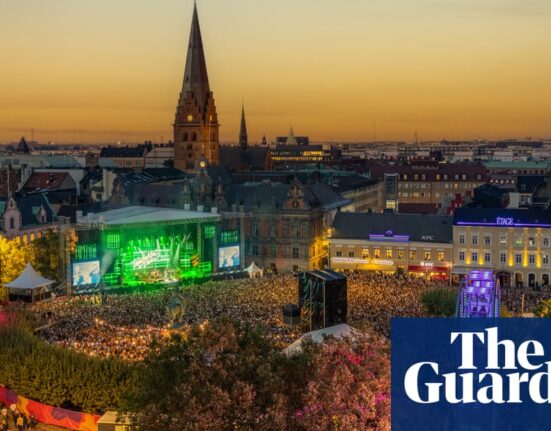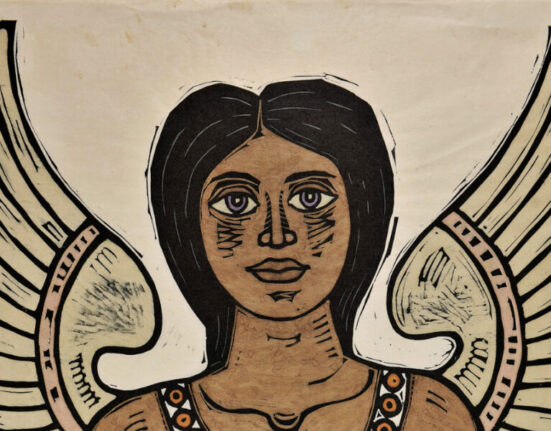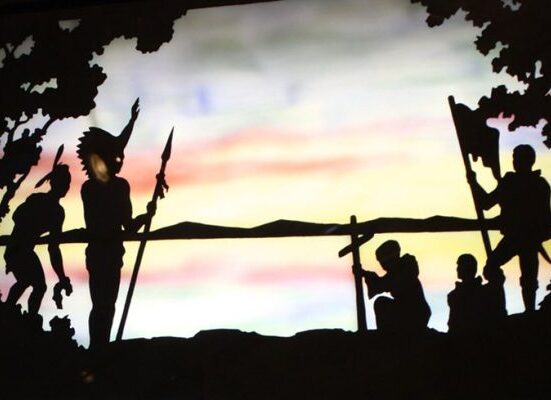In the European tradition, at least since Giorgio Vasari’s Lives of the Most Excellent Painters, Sculptors, and Architects (1550; 1568), more commonly known as The Lives of the Artists, there has been a fascinating interplay between those who make art and those who write about it. Vasari, for instance, was accused soon after the publication of the first edition of his book of favouring the artists of Florence over those of Venice; and his attempts to redress the perceived imbalance in the second edition were considered by most readers perfunctory and unconvincing. He remained a partisan of his own home town, as writers so often do. Artists too. The rights and wrongs of that ancient quarrel aren’t my concern here; but the ways in which writers pair up with artists is, and also how they write about them.
There have been many combinations of artists and writers over the last hundred years or so. Some, like the friendship of Paul Cézanne and Émile Zola, ended badly. Others, like the partnership between Max Beckmann and Stephen Lackner, benefited both parties and left no acrimony behind. In twentieth century New Zealand we have the example of Colin McCahon and Gordon Brown; and, more obscurely, Allen Maddox and Tony Green. These were relationships between near contemporaries; another kind is that between a younger writer and an older artist: Francis Pound on Gordon Walters. That is also an example of the living writer/dead artist dynamic, as is the recent Greg O’Brien book about Don Binney. It shouldn’t go unremarked that these are all male/male pairings. Female/female ones, like Jill Trevelyan and Rita Angus, or Mary Kisler and Frances Hodgkins, are less common. Male/female or female/male are much more rare; but that is what we have here.
Luke Smythe began cataloguing Gretchen Albrecht’s oeuvre in the late 1990s. It took him about five years and laid the groundwork for the volume under review; which is a revised and expanded version of a book of the same title, published by the same publisher, under a different cover, in 2019. The additions here relate to a hitherto neglected series, Illuminations, referencing Rimbaud, from the late 1970s; and the work Albrecht has produced since 2018. The last section of the book, ‘Time’s Measure’, covers the years 2019-2023 and includes a major series, ‘Eight Hours’, made between 2019-21. These were the lockdown years and the text explores ways in which the restrictions affected the work the artist was able to do. It is perhaps unusual for a revised work to appear so soon after the original publication and no reasons are given as to why this was done. Perhaps it is just because the earlier version sold out.
Smythe is a New Zealander who has worked in the US and Germany (he is about to publish a book on Gerhardt Richter) and now teaches in the Faculty of Art Design and Architecture at Monash University in Melbourne. He must have been quite young, perhaps still a student, when he began cataloguing Albrecht’s work. And, it turns out, he first visited Albrecht’s studio many years before that, in the early 1980s, in the company of his parents, who were thinking of buying a work — which they did, he says, acting upon his childish recommendation; and still have it on their walls of their house today.
The Albrechts are also a tight knit family. For a long time Gretchen’s father made the stretchers for her canvases; when he retired towards the end of the 1980s, the work was taken over by her brother, who makes them still. She is married to James Ross, a fine painter in his own right and also a formidable organiser, curator and networker, both in New Zealand and internationally. With Gretchen’s son, Andrew, from an earlier marriage, he is one of the two dedicatees of Smythe’s book; but the part he has played in his wife’s career is not a focus of the text. This is not a criticism; I’m sure the decision to leave him mostly out of things was deliberate and made for good reasons.
That leaves the pairing of Gretchen Albrecht and Luke Smythe, the artist and the writer. Smythe’s text is chronological; the biography of the artist figures in the narrative, with the significant events of her life noted and sometimes related to a concurrent work, but his interpretations don’t rely upon biographical information as such. Rather, his approach is formal and thematic: he is concerned to relate Albrecht’s work to the currents of art history, in terms of recent practice in abstract art and more traditional art historical sequences — as far back as some of the Florentine artists Vasari wrote about in the sixteenth century. Indeed, the foreword to the book, by Mary Kisler, has she and Albrecht wandering around Florence together in the spring of 1992. Smythe is also very much concerned with what the paintings mean.
Probably the most notable thing about his text, however, is how closely he has worked with Albrecht to produce it: almost as if he were her amanuensis. Perhaps that is not the right word: it might suggest something deferential in the relationship, which there may indeed once have been, before it evolved into a flow of perceptions and intuitions between the two of them which goes both ways and seems to have been the modus operandi for the making of this book. Smythe intuits or deduces certain formal or thematic qualities in the work, which he runs past the artist, who inflects, deepens, confirms, corrects or denies whatever idea the writer has arrived at; and he modifies it accordingly. She also made her studio notebooks available to him for use.
This is why so much of what Smythe writes sounds authoritative, not so much in objective terms as in the sense that he really does seem to be saying what the artist was trying to do when she made this or that work; what her influences were; occasionally, though not often, what her ultimate judgement of the success or failure of it might be. Smythe himself doesn’t make many judgments either; rather they are implicit in his enthusiasm and his desire to explicate the paintings. Some of the explanations are more impressionistic than others; some seem to reach for or to strain after significance. However, because they are all solidly based in the artist’s intentions, they never feel arbitrary or speculative.
*
Gretchen Albrecht was born in Onehunga, one of four children of a self-employed builder, and grew up in Auckland. She remembers her father coming home with the plans of a new house he was going to build and unfurling them on the kitchen table; and credits that experience with giving her the love she still has for architecture. Smythe several times points out the technical details of the construction of her shaped canvases and the way those shapes relate to architectural features found in Romanesque architecture and Renaissance painting. He also records that she was fascinated from a young age by her mother’s sewing bag and was an early, and ongoing, user of collage in her work, initially combining felt and taffeta with acrylics; and later employing paper and other materials.
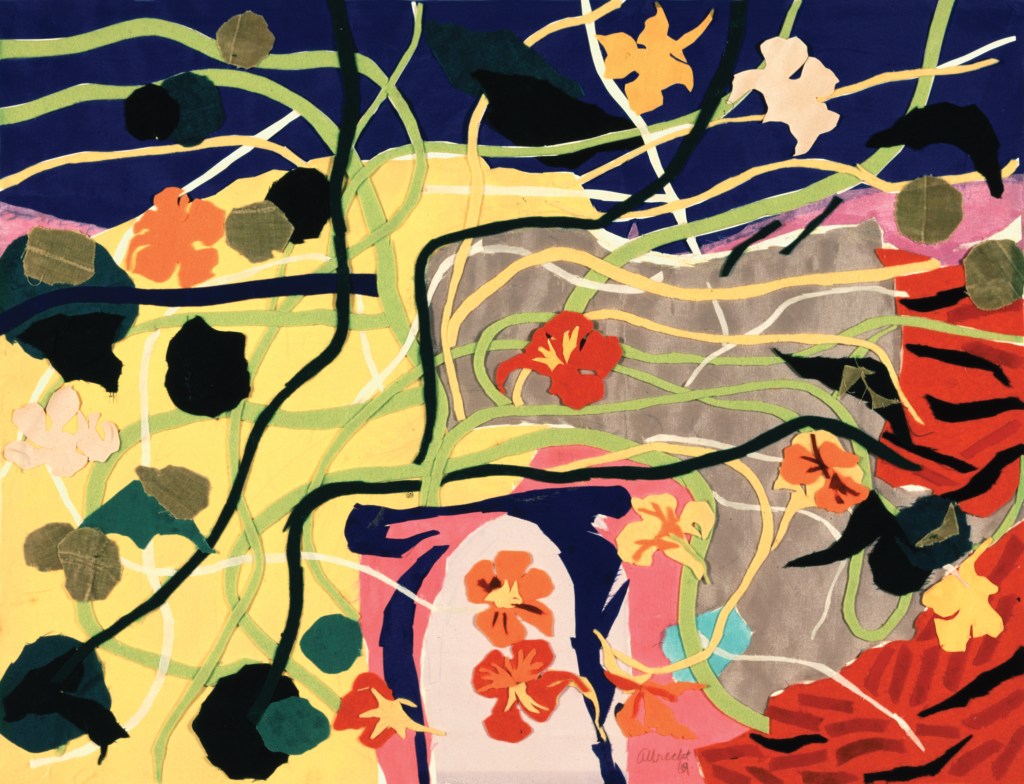
*
Albrecht went to Mt Roskill Grammar where she encountered a progressive and innovative art teacher, Colin de Luca, who opened her mind to the possibilities of a career in fine art. At Elam Art School in the early 1960s half the teaching faculty were women artists; including Lois White and Louise Henderson. There Albrecht was taught drawing by the late Jim Allen. Two of her art history teachers at the university, Arthur Lawrence and Kurt von Meier, had an enduring effect on the way she looks at art: the first was an expert in Romanesque architecture and the second introduced her to modernist women painters, including Frances Hodgkins. She also received encouragement from Colin McCahon, who at that time worked at the Auckland City Art Gallery.
The early works in this volume, both drawings and paintings, are figurative and expressionist and reminded me of some of the 1940s and 50s works by Australian artists Arthur Boyd and Albert Tucker — especially Boyd’s mythological paintings. However, in what is probably a deliberate omission, neither of these artists is mentioned in the text. Instead we are referred to Paula Modersohn-Becker, Kathe Kollewitz and Hodgkins herself, whose Self-Portrait: Still Life von Meier took Albrecht to the ACAG to see. A series of paintings of objects arranged on tablecloths from the early 1970s make explicit reference to the Hodgkins; but the things Albrecht arranged then painted were exclusively flowers and leaves from her own garden.
At some point Albrecht began to stain her canvases with acrylic paint the way Helen Frankenthaler had done in the 1950s and minimalists Kenneth Noland and Morris Louis did in the 1960s. A show of Louis’ work came to Auckland in 1971 but Smythe is at pains to point out that Albrecht’s methodology differs from that of the Americans; also that she was experimenting with the technique before she saw the Louis show. It was a confirmation of a direction she was already taking, not the cause of a new departure. Around the same time, in 1972, Gordon Walters suggested she try using a commercially available sponge-headed tool called a speed brush instead of more conventional implements; it left fewer marks on the unprimed canvas she favoured. She took his advice.
Subsequently, Smythe tracks Albrecht’s increasing use of abstraction from her landscape paintings of the late 1960s and early 1970s, many of which take as their subject matter the land/sea/sky vistas you see looking out over the Tasman Sea from Auckland’s west coast beaches. He calls the multi-coloured horizontally stacked landscape forms ‘striations’ and points out that they never entirely leave their representational substrate behind. It was these works of Albrecht’s that I first saw, in 1976, at the Victoria University Library in an exhibition curated by Neil Rowe. I remember the show but had forgotten I reviewed it. Smythe reminded me by quoting a sentence from that review: “the paintings are rainbow filters through which the light of the landscape enters the room”. This is part of a deliberate (and honourable) strategy to include in his text the responses of other writers over the years to Albrecht’s work.
Up until this point Albrecht was using conventional rectangular canvases; it is during the early 1980s, and under the influence of a particular work by Peiro Dela Francesco, that the shaped canvases began to arrive. In a chapter called ‘Shaping Significance’ devoted to the years 1980-84, Smythe gives an excellent analysis of just how the breakthrough was made. This comes about a third of the way through the book and marks the emergence of what might be called Albrecht’s mature style, with reference to the hemispheres (which are usually in fact diptychs, made from two panels bolted together) and the ovals which follow them. Smythe suggests, however, that Albrecht didn’t simply arrive at a methodology that worked and has spent the rest of her career thus far conjuring up variations upon it; his narrative, from this point on, is preternaturally alert to changes in style and format, to what actuates them and, most of all, to what they mean.
In a paper published in 1986 Francis Pound called Albrecht’s hemispheres ‘Realms of Connotation’ and Smythe picks up on this word and runs with it. To connote is ‘to convey something in addition to exact explicit meanings’; in abstract painting, of course, it is precisely those ‘exact explicit meanings’ which are usually absent. Smythe uses the connotations he finds in individual works to show that the paintings are not mere assemblages of forms and shapes and colours, as some abstract artists, for instance Donald Judd, have claimed their work to be. Rather, while Albrecht’s paintings may lack explicit reference to objects in the real world, they nevertheless assemble meanings which may be disentangled to give a convincing explanation as to what the work in question is ‘about’.
Much of this process of interpretation, inevitably I suppose, takes its cue from Albrecht’s titles, which are resonant, poetic and directly reference whatever subject matter she was exploring at the time of painting. She calls herself a process painter and says that she doesn’t usually know what the title of a work is going to be until she is some way into it; she discovers the title in the same way she discovers the configuration of the painting she is making. Smythe uses these titles to draw out webs of association; some of these rely upon large concepts which might include the ocean, the sky, the universe; or indeed the human psyche and its unconscious; but they are also sparked by Albrecht’s references to particular poets or to particular literary works and here Smythe’s interpretative strategies are on firmer ground.
Albrecht also calls herself a gestural artist, one who nevertheless works in geometric formats — hence the book’s subtitle, ‘between gesture and geometry’. The gestures are those of the hand, the arm and any mechanical extension of the arm to make the swathes and washes of paint within the geometry of the shaped canvas, whether that be a hemisphere, an oval, a rectangle or something else. Smythe’s interest in this polarity arises out of his take on the genealogies of twentieth and twenty-first abstract art; he endeavours to show how Albrecht’s work unites two seemingly opposed streams; that is, the gestural and the geometric. The one inclines, often rhetorically, towards the austere, the formal, and the purely abstract; the other is rooted in the emotion of the gesture and derives ultimately from expressionism and its forebears.

*
In some ways art writing is always an impossible task. The famous remark that “writing about music is like dancing about architecture” comes to mind. But Smythe writes well and his occasional lapses are always forgiven, if not actually augmented, by the ineffable grandeur of whichever of Albrecht’s works he is referring you too. She really is a magnificent artist and as such her work is beyond words — otherwise why paint? However there is a sense, and it goes back as far as Vasari, and probably to the illuminated manuscripts before him, in which images do need words. Writing, allied with illustration, ensures a wider transmission of what are usually unique objects, and so may convince a larger audience of the merits of a particular work or, as here, an entire oeuvre.
To those who might yearn to know, or to be told, what Albrecht is doing, Smythe says she is “ordering our experience with a view to providing us with reassurance”; furthermore “the abiding theme of her practice [is] the transmission of emotion and sensation through an abstract evocation of nature’s energies.” Albrecht’s own credo, from early in her career, that she painted to still the anguish within, is a more succinct formulation of the first of these propositions. It is also strangely reassuring, albeit in a different way, that when asked about that statement in a recent interview, she said she couldn’t remember making it. It remains the case that, however sombre her canvases may appear — and some of them are very dark — they are always also uplifting. In this she is the equal of Rothko.
This is a book of permanent value. The chronology alone is evidence of an impeccable curatorial endeavour. There are high quality reproductions of more than 260 works; each of the phases of Albrecht’s 50-year long career is represented and all the major series generously illustrated — from the vast, fiery, red and yellow hemisphere called In a Shower of Gold, to the austere mysteries of ‘The Seven Sorrows of Mary’, to the remarkable late works that take off from aspects of the palette used in Goya’s portraits of women.
It’s perhaps fitting to give the last word to Smythe, who remarked in interview that “writing about art forces repeated looking and deeper learning. It’s one of the great rewards of the work.” Then added: “Abstraction is at its best when it’s at its most promiscuous and flirting with all manner of potential meanings.”
Gretchen Albrecht: between gesture & geometry by Luke Smythe (Massey University Press, $85) is available in bookstores nationwide.
